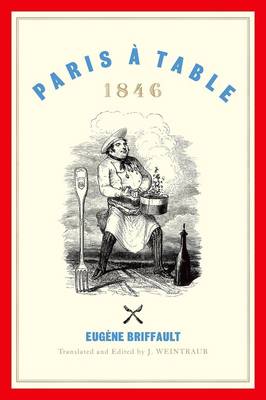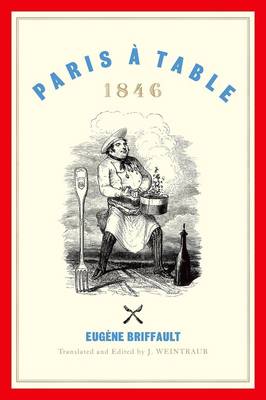
- Retrait gratuit dans votre magasin Club
- 7.000.000 titres dans notre catalogue
- Payer en toute sécurité
- Toujours un magasin près de chez vous
- Retrait gratuit dans votre magasin Club
- 7.000.0000 titres dans notre catalogue
- Payer en toute sécurité
- Toujours un magasin près de chez vous
Description
Described by Le Monde as "the richest view of Balzac's time seen from the table," Paris � Table: 1846 is an essential text in the history of gastronomy, along with Brillat-Savarin's The Physiology of Taste and Dumas's Dictionary of Cuisine. Its author, Eug�ne Briffault, was well-known in his day as a theater critic and chronicler of contemporary Paris, but also as a bon-vivant, celebrated for his ability to quaff a bell jar full of champagne in a single draft and well-qualified to write authoritatively about the culinary culture of Paris. Focusing on the manners and customs of the dining scene, Briffault takes readers from the opulence of a meal at the Rothschilds' through every social stratum down to the student on the Left Bank and the laborer eating on the streets. He surveys the restaurants of the previous generation and his own--from the most elegant to the lowest dive--along with the eating habits of the bourgeoisie, the importance and variety of banquets, the institutional meal, and even the plight of "people who do not dine," artists and intellectuals who fell on hungry times. He records the specialties, the d�cor, the patrons, and the restaurateurs and their waiters. A fine storyteller, Briffault collected culinary anecdotes, from the tantrums of a king deprived of his spinach to the tragedy of "the friendliest pig that was ever seen." The volume includes the humorous drawings of the caricaturist Bertall that cleverly reinforce the witty and ironic tone of the text. Along with J. Weintraub's introduction--which provides the first modern biography of the author and analyzes the place of Paris � Table in the literary culture of the time--the text is copiously annotated, acquainting readers with the events and characters that enliven the narrative. Paris � Table provides a delightful and delectable entryway to Briffault's Paris, the city Walter Benjamin characterized as "the capital of the nineteenth century."
Spécifications
Parties prenantes
- Auteur(s) :
- Traducteur(s):
- Editeur:
Contenu
- Nombre de pages :
- 272
- Langue:
- Anglais
Caractéristiques
- EAN:
- 9780190842031
- Date de parution :
- 10-04-18
- Format:
- Livre relié
- Format numérique:
- Genaaid
- Dimensions :
- 147 mm x 211 mm
- Poids :
- 408 g

Les avis
Nous publions uniquement les avis qui respectent les conditions requises. Consultez nos conditions pour les avis.






